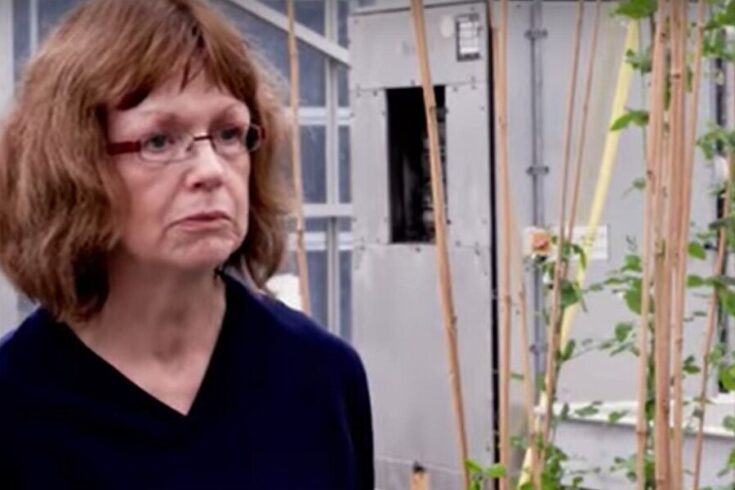In the mid-19th century, Gregor Mendel, now considered the father of the science of genetics, conducted experiments with peas which revealed the fundamental laws of inheritance. Mendel’s legacy is alive and well at Norwich’s John Innes Centre, a world-renowned centre of excellence in plant and microbial science that is strategically funded by the Biotechnology and Biological Sciences Research Council (BBSRC). The first director, William Bateson, of what was then the John Innes Horticultural Institution, coined the term ‘genetics’ over a century ago.
Now, the John Innes Centre’s Germplasm Resource Unit (GRU) is a public collection of seeds of immense value to researchers and plant-breeders. It is funded by BBSRC via a National Capability grant designed to support science, facilities and infrastructure, for national and public benefit.
The collection holds over 3,500 variants of peas alone. These have provided the platform for a welcome breakthrough in diabetes – one of this century’s big health challenges, which caused an estimated 1.5 million deaths worldwide in 2019.
Video credit: John Innes Centre.
On-screen captions and an autogenerated transcript are available on YouTube.
About the project
Preventing and managing diabetes depends on controlling the blood sugar spikes that occur after eating. One possible substance for limiting those spikes is resistant starch, which resists digestion in the small intestine and limits the body’s glucose production. Some pea varieties contain high levels of this beneficial material.
Professor Claire Domoney set out to investigate the peas’ potential, supported by a BBSRC Diet and Health Research Industry Club (DRINC) grant, and worked with Imperial College London and the Quadram Institute. The institute is funded by BBSRC, alongside the John Innes Centre on the Norwich Research Park.
Using the GRU seed collection, the researchers chose two near-identical pea lines where one contained a large amount of resistant starch. The selected varieties were used to produce mature peas (which contains much more starch than immature peas) in sufficient bulk for the trials. It was also important for these experiments to know what impact processing the peas for consumption had on the amount of resistant starch.
The GRU collection played a pivotal role in reducing the time needed to identify pea varieties for study.
Four trials took place at Imperial College London, each involving between 10 and 25 adult volunteers with no existing health conditions. The results were hugely encouraging.
“There is much evidence that diets rich in a type of carbohydrate called resistant starch have a positive impact on controlling blood glucose levels, and hence reduce susceptibility to type 2 diabetes,” says Dr Katerina Petropoulou at Imperial College London.
“A major advantage of our trials was that we had two near-identical pea products to compare,” Professor Domoney reports. “The pea, which is high in resistant starch, suppressed blood sugar spikes when compared with the control, while whole peas performed better than pea flour. The striking clarity of the results was a pleasant surprise.”
Impacts of the project
The research shows clear potential for the peas to help reduce the rising, multi-billion pound costs of treating diabetes. This depends on the necessary approvals being given for mass use of resistant pea starch as an ingredient in prepared foods or as a snack.
There is a huge opportunity for UK plant-breeders to develop commercial pea varieties high in resistant starch. Increased pea production also offers environmental benefits such as nitrogen fixation and improved soil health.
The research into pea traits, beyond protein content, has the potential to increase the value of pulse crops. There is also potential for the pea mutation to be bred into other staple crops, such as rice and wheat.
Professor Pete Wilde of the Quadram Institute said: “This study has shown us that by preparing these peas in certain ways, we can further reduce these blood sugar spikes, opening up new possibilities for making healthier foods using controlled food processing techniques.”
Find out more
The history of plant science and microbial science at the John Innes Centre.
Germplasm Resource Unit on the John Innes Centre website.
The cost of diabetes on the Diabetes UK website.
Diabetes overview, health impact and prevention on the World Health Organization website.
Find details on Gateway to Research for the joint grant project ‘Using crop genetics to understand the importance of dietary resistant starches for maintaining healthy glucose homeostasis’:
- John Innes Centre (BB/L025531/1)
- Imperial College London (BB/L025582/1)
- Quadram Institute Bioscience (BB/L025566/1)
- Scottish Universities Environmental Research Centre (BB/L025418/1).
Top image: Professor Claire Domoney, pea geneticist at the John Innes Centre. Credit: John Innes Centre.

